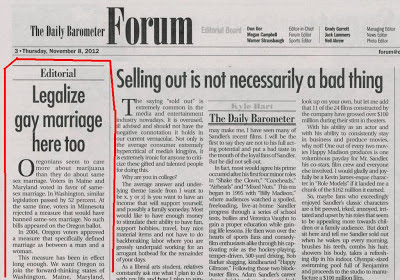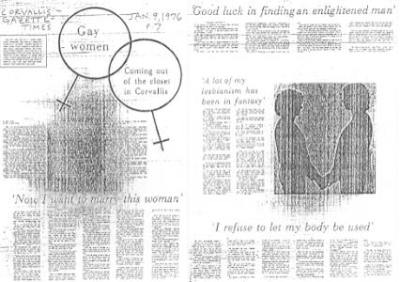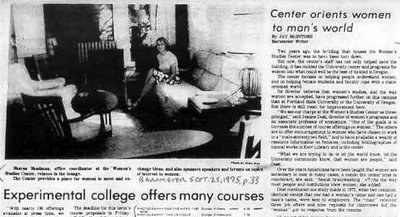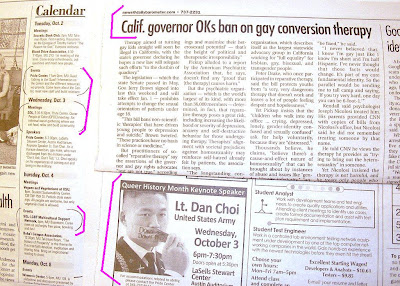PHOTO: Thomas Kraemer is shown above, at the end of 2012, not much worse for the wear, sporting a bright white beard and feeling in the spirit of being a Merry Christmas Santa Claus, but while also wearing some very heavy and thick eyeglasses made of real glass (not made of the standard plastic lenses, which would be even thicker) to obtain the necessarily high index of refraction required to partially compensate for his low vision blindness, which was caused by an ischemic stroke a few years ago. His current vision is similar to the typical grainy nighttime security camera videos often shown on TV news shows to ask for the public's help in identifying suspects, but he is also unable to recognize faces and some objects in a group of objects. See my previous post My low vision blindness is like seeing a captcha all the time (1/1/12 where I describe some of the complex problems caused by my low vision blindness, all of which are uncorrectable using any technology known today.
Despite having gone legally blind, I am glad that I have been able to keep blogging for 7 years, even though I can only do it at much slower pace today. (See my previous post Year 2006-2011 in review - 6 years of blogging (12/1/11)) When I started blogging seven years ago, it was a chic thing to do and Google soon bought the Blogger service, which at one time was being directly used by several internationally famous gay pundits, such as the gay conservative blogger Andrew Sullivan and gay liberal blogger Michelangelo Signorile. Both men soon become some of the first professional bloggers and shifted away from using Blogger.
The Blogger site of gay liberal Signorile moved to its own domain name signorile.com for Michelangelo Signorile XM radio show. Also, huffingtonpost.com blogger Michelangelo Signorile is the Editor-at-Large of Huffington Post Gay Voices page. Similarly, after using the actual Blogger Service for awhile, Andrew Sullivan moved to writing The Atlantic blog by Andrew Sullivan, "The Dish" at andrewsullivan.theatlantic.com. Andrew Sullivan's blog then moved to being hosted by The Daily Beast at andrewsullivan.thedailybeast.com.
My purpose in blogging was never to do it professionally or obtain fame and glory by attracting a huge audience. I only wanted to use Blogging as a tool to document things of personal interest to me and share my notes with only a few other people on the Earth. I quickly discovered the real power of blogging, which is the ability to use Google search to find things in my own Blog notes. Unlike my decades of typewritten notes, which I can no longer search by skim reading due to my low vision blindness, I can quickly find things in my notes, even surprising things that I've forgotten writing, by doing a simple Google search of my blog.
I don't mind that many other people have also found my notes by doing a Google search, but the downside has been that a few trolls were attracted to my blog and they were able to trick Google's system into labeling my blog as having possible "objectionable content," which as a side effect disabled the ability to search my own blog. See my previous post This may be my last post - customer feedback to Google (12/1/11).
When Blogger disabled the ability to search my own blog, it became an even bigger problem for me as my low vision blindness worsened and I needed to be able to search my own blog even more in order to relocate my notes. After I was unable to solve this problem created by Google, I did a crude workaround fix and created the new blog you are reading now Tom's OSU Blog at tomsosu.blogspot.com, where I have been posting at for the last year. As a result, I quit adding new posts to my old blog (still readable, despite the "objectionable content warning" message) at Thomas Kraemer thomaskraemer.blogspot.com where I blogged for 6 years. This is why this post celebrates my 7 years of blogging.
I can still touch type blog posts as fast as ever, but my reading speed has been slowed considerably because I have to use computer software accessibility tools to read text. I also depend on picture captions, including closed picture captions that are not normally visible to users unless the internet browser is set to display closed captions and the Website has provided closed captions for pictures and videos. (You can try to see if your browser is displaying picture captions by hovering your mouse cursor pointer over my picture at the top of this post.)
Interestingly, even though I can touch type at normal speed, I can't dial a telephone number on a standard touch tone telephone number pad, probably because I never memorized the telephone key positions before my stroke and I am having problems making new spatial memories. After my stroke, for some unknown reason, I can't type either numbers or sentences while looking at any keyboard, I can only touch type without looking. This problem has made it hard for me to find and type special characters that I rarely use and had not previously memorized their positions on the keyboard before my stroke.
My Blogger posting statistics are a good measure of how much I've been slowed down by my stroke. During the last year I wrote 80 posts total, whereas I had averaged more than 250 posts per year during my previous 6 years of blogging, for a total of 1,553 posts before I suffered a stroke and started the new blog you are reading.
Unfortunately, my vision deteriorated even further during last year, probably due to more ischemic stroke damage according to my doctors and their fMRI images of my brain.
Everyone I meet asks me what I can see because I am clearly not totally blind, yet. The best description I've been able to come up with is that my vision is like watching the grainy night-time security camera videos that are often shown on TV newscasts to ask the public for help in identifying lawbreakers. Sometimes I can catch a few details of vision, but most of the time I can see only general shapes and little color. I still can't recognize faces anymore (something called prosopanosia or face blindness) and I therefore find it very difficult to watch movies with characters I am not familiar with. See previous post My low vision blindness is like seeing a captcha all the time (1/1/12.
Instead of blogging, the chic thing today is Facebook and social networking in general. Blogger was originally setup with many social networking tools, such as sharing and comments, but they are not used much despite recent attempts to add Google Circle social networking. The reason is probably because Blogger has typically attracted only the more intelligent crowd because Blogging required the ability to write posts whereas Facebook was set up to enable even the most casual user to socialize without ever having to work at it -- random socializing is much more fun for most people, including me sometimes!
Unfortunately, for some interesting and unknown reason, my low vision blindness and other neural perception problems are making it impossible for me to use Facebook, even though I had learned how to use it before my last stroke with my private family members. I don't know if it is because Facebook uses a more graphical user interface, which is hard for me to see, or if it is due to something else. I suspect I might have the same problem with Blogger if I was also using it as a social networking tool with the Google 1 Circle feature, but I have been using Blogger mostly as a solitary tool. Part of my problem is that I can no longer look at the screen and recognize the graphical connections between faces and other objects. I also can't read very fast either. I am sure that my disability would be an interesting subject for the user interface researchers, who I employed in a former job as an advanced research manager for the large Hewlett-Packard computer company, because user interface researchers are always looking for different models of perception in a quest to design better user interface designs more universally usable by everyone.
I plan to live another few decades before I die, but I have experienced some ominous signs telling me that I am about to die soon. The areas of my brain killed by the ischemic stroke are being consumed and swept away by my immune system, which is causing brain swelling and inflammation that in turn is causing me seizures and various neuropathic pains. It is hard to tell how much of my symptoms are benign and will heal to a stable point where I will suffer only from mostly vision loss or if my symptoms will progress further and cause worse problems, such as paralysis or even death.
Looking back at my life, I feel so blessed by God because my life has been much more good than bad. I am glad that I have been able to contribute a few small things to the world during my lifetime and hope I can do even more before I die. If I died tomorrow, I am glad that I have no regrets about how I've lived so far. (Although, I can think of things I would have done differently or even better!)
Speaking of looking back, here is my list of highlights from 2012:
- Magnus Hirschfeld, Jack Baker, University of Minnesota and Oregon State University gay connection (1/21/12)
- IRS tax forms are not low vision accessible and violate ADA law (1/5/12)
- Congressman Peter DeFazio responds to my IRS ADA complaint (1/19/12)
- CBS "The Homosexuals" 1967 report featured Jack Nichols (3/9/12)
- Gay marriage pioneer Jack Baker starts blog (confirmed) (4/4/12)
- Gay frat boy's election shows progress toward equality at OSU (5/2/12)
- Professional engineering magazine mentions gay computer pioneer (6/9/12)
- OSU Lavender graduation ceremony keynoted by Jeff Kenney (6/18/12) (See my previous posts OSU LGBT Services Jeff Kenney replaces Steven Leider (6/2/12) and OSU School of Language, Culture and Society is perfect for OSU Foundation Magnus Hirschfeld Fund (2/19/12))
- Google Maps Street View Car seen near OSU as tuition rises (7/8/12) -- The car was driving east on Boxwood Drive, paused at a stop sign and then turned left north on Honeysuckle Drive on Monday, June 11, 2012 at about 12:02 PM Pacific Time.
- Government time standard via Web clock display (11/3/12)




















